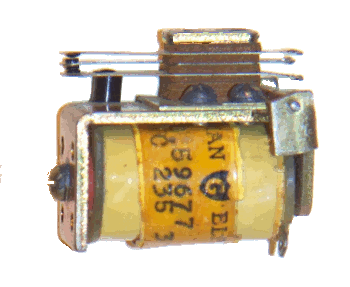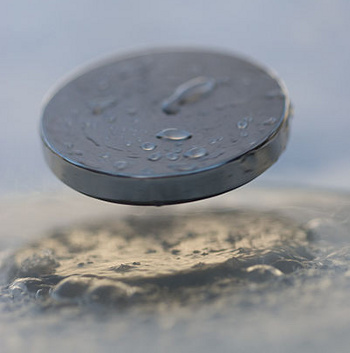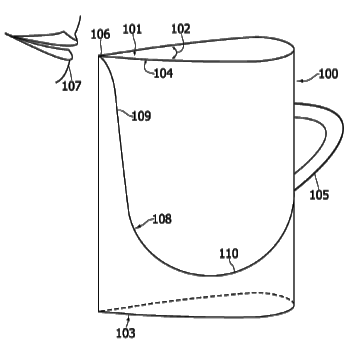Easter Holiday
April 16-23, 2014
 Tikalon
Tikalon is on
Easter holiday. The next article will be posted on Wednesday, April 23, 2014. Although
Christmas is more popular, especially among
children, Easter is the
theologically most important holiday in
Christendom. As are most things in today's world, Easter has been
secularized, and we'll see many more
bunnies,
chicks, and
flowers than
religious symbols.
Easter is a
movable feast; so, unlike Christmas, it occurs on different dates in different years. This year, Easter is on April 20, which is the
birthday of three famous
physicists and one likewise famous
astronaut and
engineer.
(Photo by Zeisterre, via Wikimedia Commons.)
George Robert Stibitz (April 20, 1904 - January 31, 1995), a
mathematical physicist working at
Bell Laboratories, built a
binary adder in his
kitchen in November, 1937. This
battery-powered
circuit had just two
light bulbs, two
relays, and two
switches constructed from bits of
metal, but it was the first
electromechanical computer circuit. This
prototype led to the design and construction in 1939-1940 of an electromechanical computer capable of multiplication and division of
complex numbers. That computer cost $20,000, which is more than $300,000 in
today's money.[1-2]

An electric relay, not that different from the ones that George Stibitz used in his two-bit binary adder.
In electronics circles, Sibitz's circuit is known as a "breadboard."
(Photo by the author)
Kai Manne Börje Siegbahn (20 April 1918 - 20 July 2007) was a
Swedish physicist who shared the 1981
Nobel Prize in Physics for his development of
X-ray photoelectron spectroscopy (XPS).
Karl Alexander Müller (April 20, 1927 -) is a
Swiss physicist who shared the 1987 Nobel Prize in Physics with
Georg Bednorz for their discovery of
high temperature superconductivity. Most critically, some high temperature superconductors operate at
liquid nitrogen, rather than
liquid helium,
temperatures.

Levitation of a magnet above the high temperature superconductor, YBa2Cu3O7, at -196°C.
Levitation is the consequence of the Meissner effect.
(Photo by Julien Bobroff, Frederic Bouquet and Jeffrey Quilliam, Laboratory of Solid State Physics (Orsay, France), via Wikimedia Commons.)
Donald Roy Pettit (April 20, 1955 -) is a
chemical engineer and
NASA astronaut. Pettit had two
tours of duty on the
International Space Station, and he was a
crew member of one
Space Shuttle mission.
Engineering, or perhaps
coffee, is Pettit's passion, since he
invented a
zero-g coffee cup that can be used without a
straw. The cup makes use of
surface tension and
capillarity to hold and deliver the
liquid. As explained in his
patent abstract,
"A beverage cup comprised by an open top and at least one channel defined by a corner with an acute angle so placed that the channel runs along the cup side from the cup bottom to the cup rim. In the absence of significant gravitational force as found in microgravity, weightless or weightlessness of spacecraft or the International Space Station, capillary forces between the beverage and the cup wall allow the beverage to creep along the channel and be in near proximity to the open cup rim. Lips placed at or near the channel at the rim can readily sip, drink, and consume the beverage without the need for a straw and without undue spillage for normal drinking motions including toasting. The channel conducts the beverage via capillary forces from the bottom of the cup to the rim until the beverage has been consumed."[3]

Fig.1 of US Patent No. 8,074,827, 'Beverage cup for drinking use in spacecraft or weightless environments,' by Donald Roy Pettit, Mark Milton Weislogel, Paul Concus and Robert Finn, Dec 13, 2011.
(Via Google Patents.)[3)]
![]()
References:
- Georgi Dalakov, "Relay computers of George Stibitz," History of Computers, Computing and Internet Web Site.
- Stibitz calculators at Bell Labs, Chapter Four of the History of Mechanized Thought, Haverford College Web Site.
- Donald Roy Pettit, Mark Milton Weislogel, Paul Concus and Robert Finn, "Beverage cup for drinking use in spacecraft or weightless environments," US Patent No. 8,074,827, Dec 13, 2011.
Permanent Link to this article
Linked Keywords: Tikalon; Easter; holiday; Christmas; child; children; theology; theological; Christendom; secularization; secularize; rabbit; bunny; chick; flower; religion; religious; symbol; movable feast; birthday; physicist; astronaut; engineer; Wikimedia Commons; George Robert Stibitz (April 20, 1904 - January 31, 1995); mathematical physics; mathematical physicist; Bell Labs; Bell Laboratories; binary adder; kitchen; battery; circuit; light bulb; relay; switch; metal; electromechanical computer; prototype; complex number; inflation; today's money; breadboard; Kai Manne Börje Siegbahn (20 April 1918 - 20 July 2007); Swedish; Nobel Prize in Physics; X-ray photoelectron spectroscopy; Karl Alexander Müller (April 20, 1927 -); Swiss; Georg Bednorz; high temperature superconductivity; liquid nitrogen; liquid helium; temperature; yttrium barium copper oxide; YBa2Cu3O7; Meissner effect; Laboratory of Solid State Physics (Orsay, France); Donald Roy Pettit (April 20, 1955 -); chemical engineering; chemical engineer; NASA; astronaut; tour of duty; International Space Station; crew member; Space Shuttle; engineering; coffee; invention; invented; weightlessness; zero-g; coffee cup; drinking straw; straw; surface tension; capillary action; capillarity; liquid; patent; abstract; acute angle; Newton's law of universal gravitation; gravitational force; microgravity; spacecraft; toasting; Donald Roy Pettit, Mark Milton Weislogel, Paul Concus and Robert Finn, "Beverage cup for drinking use in spacecraft or weightless environments," US Patent No. 8,074,827, Dec 13, 2011.